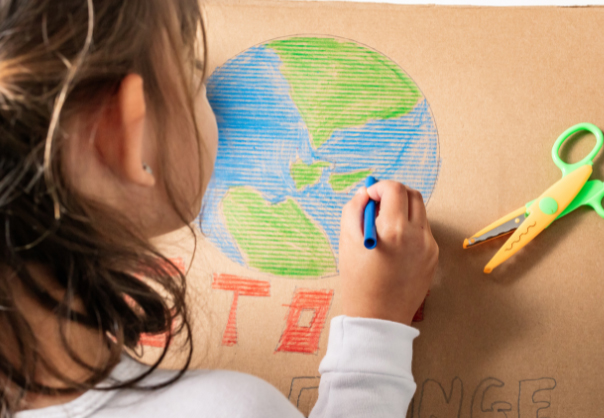
Creativity inspires action
Wastebuster and The Pod are thrilled to partner with Crayola Creativity Week because it aligns perfectly with our mission to inspire environmental awareness through education.
Fun, hands-on, creative activities engage pupils in meaningful ways, making complex environmental issues accessible and exciting.
By integrating creativity into environmental education, we can support curriculum goals and empower pupils to develop the critical thinking and innovative problem-solving skills they’ll need to tackle the challenges of tomorrow. Together, we’re fostering a generation of changemakers who can imagine and build a more sustainable future.
Find out more about Crayola Creativity Week and sign up here
Here are some ideas for how Crayola Creativity Week can support learning by aligning creative activities with environmental learning objectives. We’re sure you’ll have lots of ideas of your own, too!
Science
England (Key Stage 1 & 2), Scotland (Second Level), Wales (Progression Step 2 & 3): Pupils explore living things, habitats, and the impact of human activities on ecosystems. Activities could include designing posters about protecting wildlife or building models of sustainable habitats.
England (Key Stage 3), Scotland (Third Level), Wales (Progression Step 4): Pupils delve into climate change, renewable energy, and sustainable practices. They can visualise global warming through art or design innovative eco-friendly solutions.
Geography
England (Key Stage 2), Scotland (Second Level), Wales (Progression Step 3): Pupils study environmental regions, weather, and human impacts. Creative projects might include making 3D maps of pollution hotspots or drawing weather cycle diagrams.
England (Key Stage 3), Scotland (Third Level), Wales (Progression Step 4): Explore themes like sustainable development and resource management. Pupils can create infographics or multimedia presentations to illustrate global challenges.
Art and Design
Across all curricula, pupils can express ideas about climate change and conservation through various mediums. Activities like upcycled sculptures or biodiversity murals foster creativity while reinforcing environmental messages.
Literacy
Writing and Speaking: Pupils can write poems, stories, or persuasive essays about environmental issues to practise their creative and formal writing skills.
Discussion and Debate: Topics like “Should single-use plastics be banned?” can spark classroom debates, supporting oracy skills.
Citizenship and PSHE
England (KS2 & KS3), Scotland (Health and Wellbeing), Wales (Progression Step 3 & 4): Encourage discussions about roles and responsibilities toward the environment. Pupils can plan community actions, like organising litter picks, and present their ideas creatively.
Design and Technology
Encourage pupils to design eco-friendly products or packaging alternatives to support curriculum goals of identifying real-world problems and developing practical solutions.
Cross-curricular learning
- UN Sustainable Development Goals (SDGs): Link activities to the SDGs, such as climate action (Goal 13) and life below water (Goal 14), helping pupils connect their learning to global initiatives.
- Incorporate STEM challenges, such as creating wind turbines or water filtration systems, alongside creative representations of their environmental benefits.
Sign up here to join Crayola Creativity Week 2025
Remember that just by signing up, you could win fantastic Crayola prizes!
Check out the Crayola Creativity Week resources available now, and you’ll get exclusive access to Creativity Week 2025 resources coming soon.
